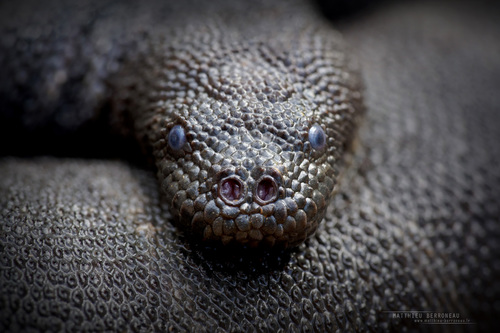In the vast underwater ecosystems of our planet, animals have evolved remarkable adaptations to survive beneath the surface. Among these extraordinary creatures is a truly unique reptile – the water snake known as Acrochordus javanicus, or the Javan file snake. Unlike any other snake species on Earth, this remarkable animal has developed the extraordinary ability to breathe through its skin while submerged. This fascinating adaptation allows it to remain underwater for extended periods, creating a lifestyle that bridges the gap between aquatic and terrestrial existence. As we explore this remarkable creature, we’ll discover how this distinctive breathing mechanism works and why it makes this snake one of nature’s most specialized reptiles.
The Javan File Snake: Nature’s Underwater Specialist
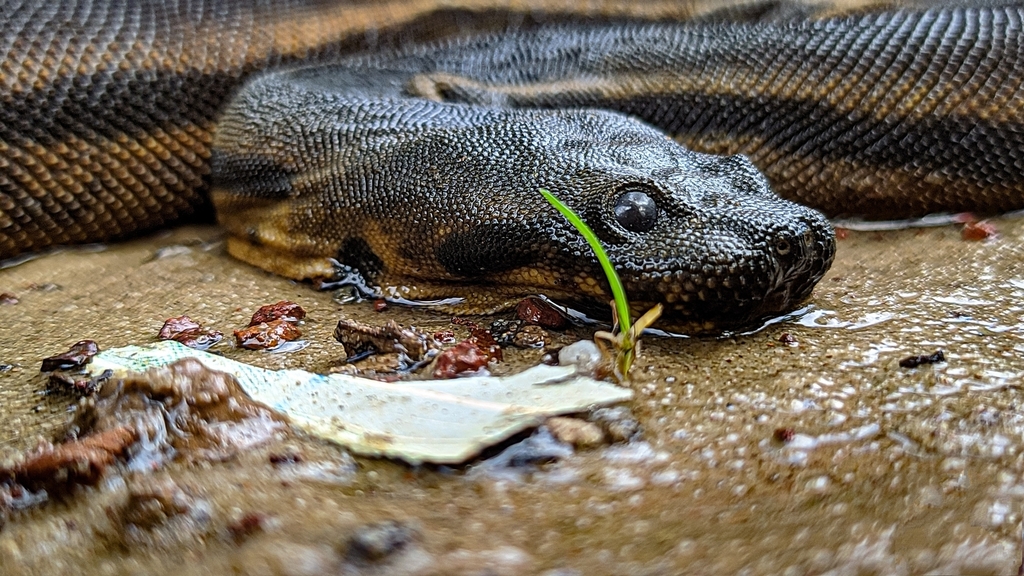
The Javan file snake (Acrochordus javanicus) belongs to the family Acrochordidae, commonly known as file snakes or wart snakes. Native to Southeast Asia, these fully aquatic reptiles inhabit freshwater environments including rivers, streams, lakes, and even rice paddies. Unlike most snakes that must regularly return to the surface for air, the Javan file snake has evolved to spend nearly its entire life underwater. Its remarkable skin-breathing adaptation represents one of the most specialized respiratory systems among reptiles. This adaptation has allowed the species to carve out a unique ecological niche, avoiding competition with more terrestrially-oriented snake species while accessing abundant aquatic prey resources.
The Science Behind Cutaneous Respiration
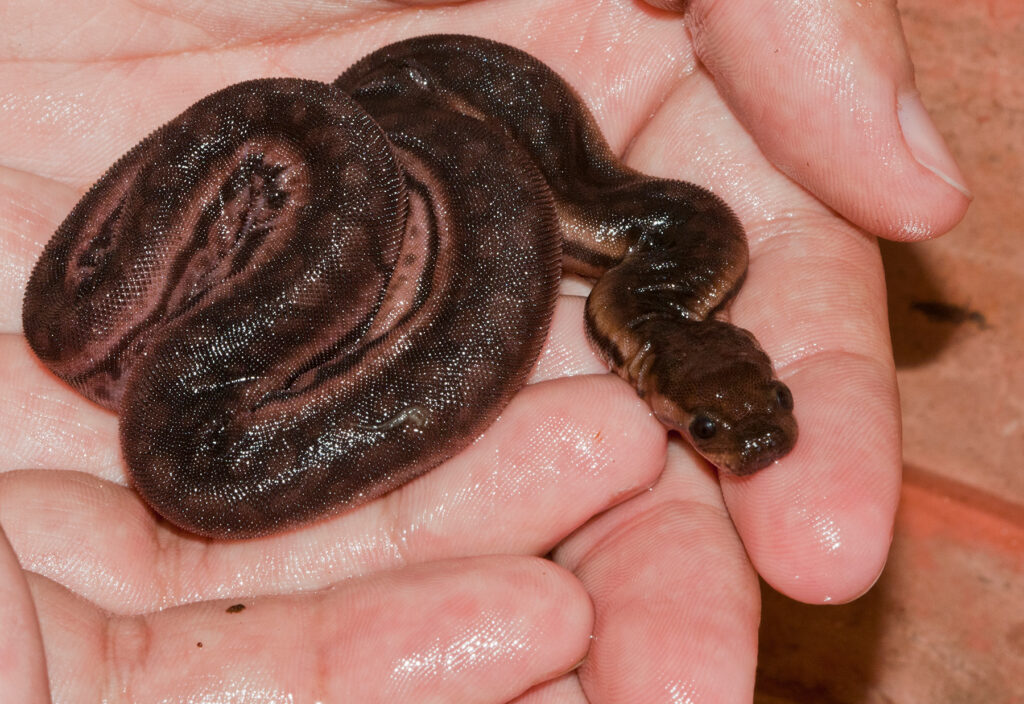
The Javan file snake’s ability to breathe through its skin is scientifically known as cutaneous respiration. This process involves the direct exchange of gases through the skin’s surface, with oxygen diffusing from the water into the snake’s bloodstream and carbon dioxide moving in the opposite direction. The effectiveness of this method depends on several factors, including the concentration gradient of gases between the water and blood, the permeability of the skin, and the surface area available for gas exchange. While many amphibians utilize cutaneous respiration, it’s extremely rare among reptiles, whose scales typically prevent significant gas exchange through the skin. The Javan file snake’s unique adaptation represents an evolutionary marvel that allows it to obtain up to 25% of its oxygen needs directly through its skin while underwater.
Specialized Skin Structure for Underwater Breathing
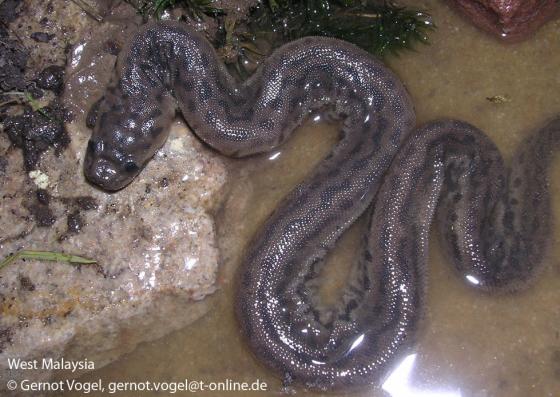
The skin of the Javan file snake has evolved specific adaptations that facilitate its underwater breathing ability. Unlike most snakes with smooth, overlapping scales, the Javan file snake possesses loose, baggy skin covered in tiny, rough scales that give it a file-like texture (hence its common name). This unique skin structure serves multiple purposes related to respiration. The loose folds increase the total surface area available for gas exchange, while the small, non-overlapping scales allow oxygen to penetrate more effectively. Additionally, the skin contains a dense network of capillaries positioned close to the surface, maximizing oxygen absorption efficiency. These specialized skin characteristics collectively create an effective respiratory membrane that supplements the snake’s lung breathing.
Dual Breathing System: Lungs and Skin Working Together
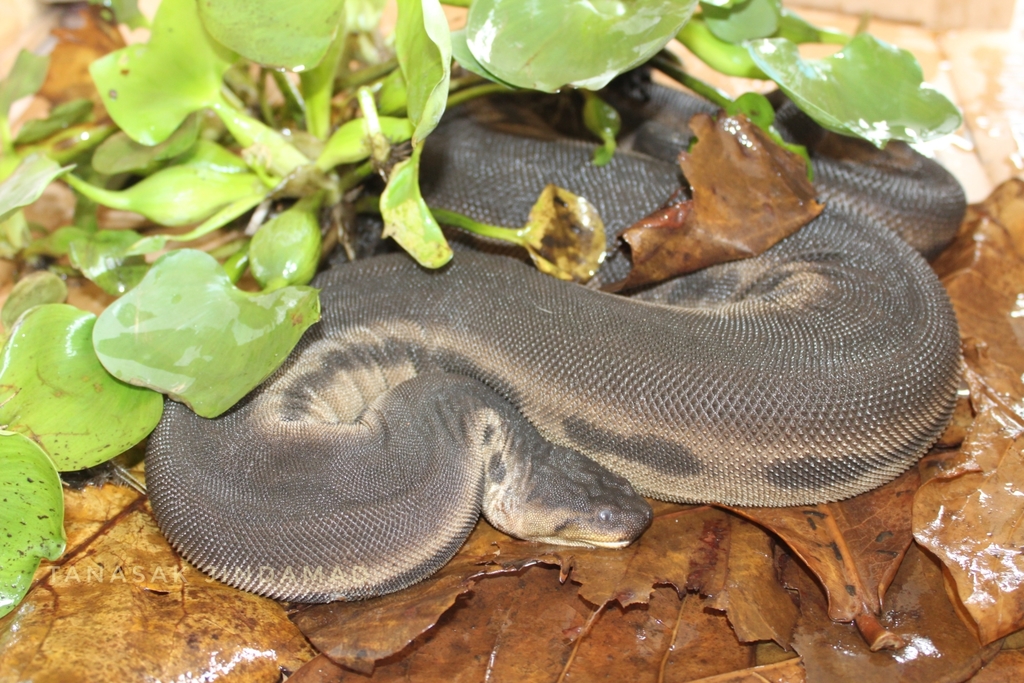
The Javan file snake employs a remarkable dual breathing system that combines traditional lung respiration with cutaneous respiration. While its skin provides a significant portion of its oxygen needs, the snake still possesses lungs and must occasionally surface to breathe air. What makes this system particularly efficient is how the two mechanisms complement each other. When the snake dives, it can extend its underwater time significantly by supplementing lung-stored oxygen with oxygen absorbed through its skin. Research indicates that skin respiration can provide between 20-25% of the snake’s total oxygen requirements, allowing it to remain submerged for much longer than would otherwise be possible. This dual approach represents an evolutionary compromise that maximizes underwater hunting time while maintaining the higher-efficiency benefits of lung breathing.
Physical Adaptations Beyond Skin Breathing
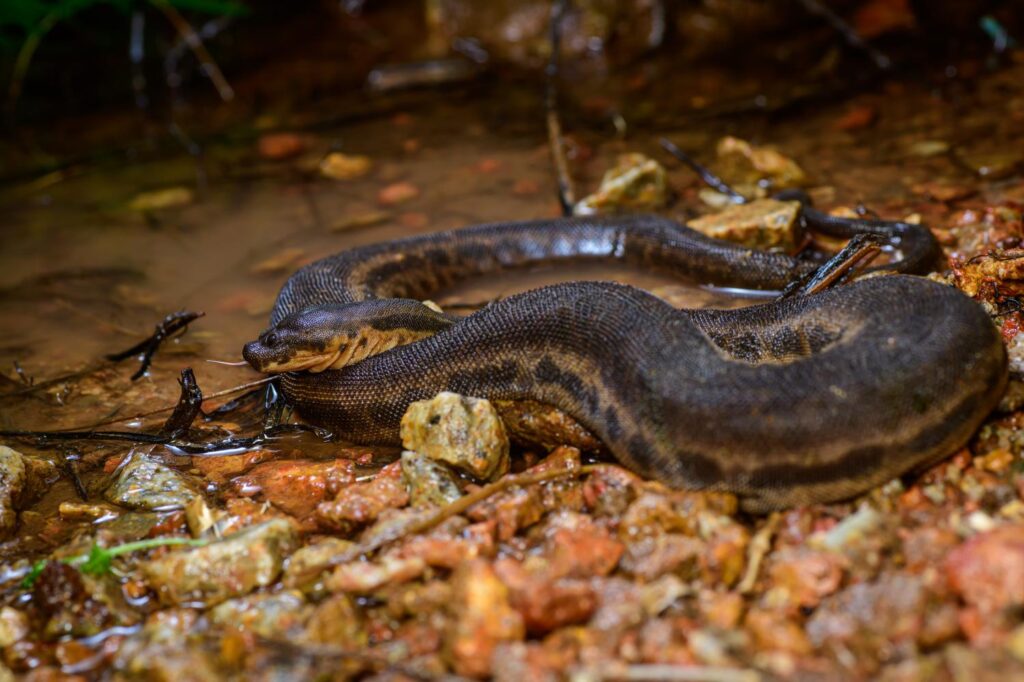
Beyond its remarkable respiratory system, the Javan file snake possesses numerous other physical adaptations that support its aquatic lifestyle. Its body is cylindrical and somewhat flattened laterally, creating a shape that moves efficiently through water. The snake’s eyes and nostrils are positioned on top of its head, allowing it to see and breathe while keeping most of its body submerged. Another distinctive feature is its tail, which is slightly compressed and acts as a paddle for swimming. The snake’s coloration typically ranges from grayish-brown to olive, providing effective camouflage in murky waters. These adaptations work in concert with its breathing mechanism to create a perfectly adapted aquatic predator that thrives in Southeast Asian freshwater ecosystems.
Hunting and Feeding Behaviors Underwater
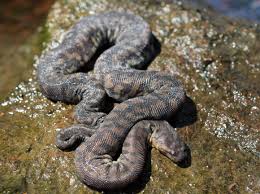
The Javan file snake’s unique breathing adaptation directly influences its hunting and feeding strategies. As a nocturnal predator, it spends nights actively searching for prey beneath the water’s surface, where its skin-breathing ability allows extended hunting periods without surfacing. The snake primarily targets fish, which it captures using a specialized hunting technique. Rather than striking with speed like many terrestrial snakes, it slowly approaches prey and then quickly coils around it, using its loose, baggy skin to engulf the fish before consuming it. This methodical hunting approach is made possible by the snake’s ability to remain submerged without time constraints that would affect other air-breathing predators. The snake’s relatively slow metabolism and energy-efficient movement further complement its patient hunting style.
Reproductive Adaptations for an Aquatic Lifestyle
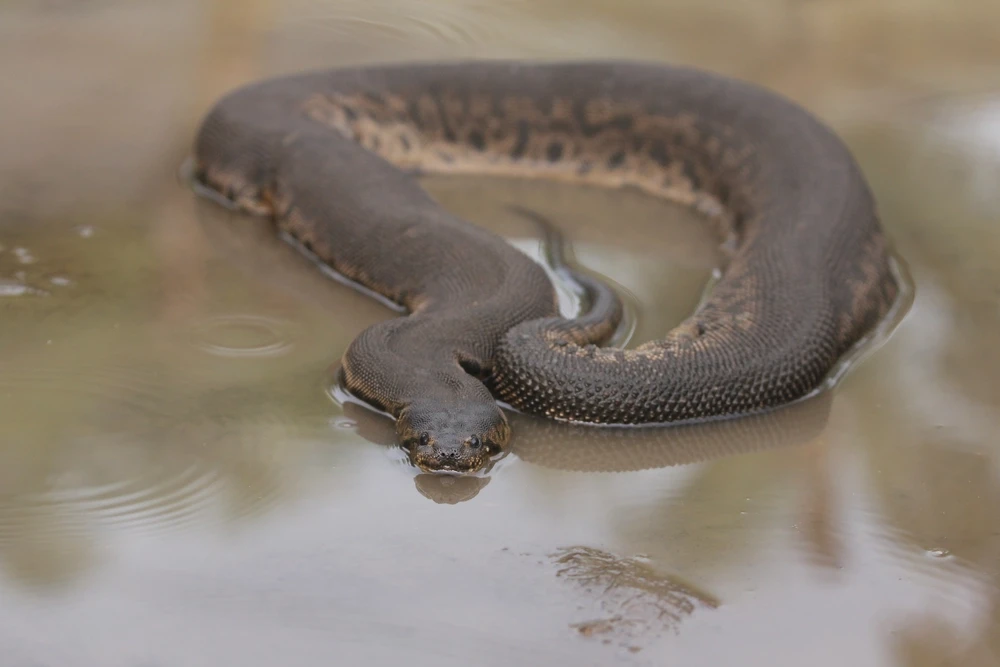
The reproductive biology of the Javan file snake has also evolved to accommodate its predominantly aquatic existence. Unlike many snake species that lay eggs, the Javan file snake is viviparous, meaning it gives birth to live young. This adaptation prevents the need for females to leave water to lay eggs, maintaining their aquatic lifestyle throughout reproduction. Female file snakes typically produce 8-30 live offspring after a gestation period of approximately six months. The newborn snakes measure about 20-30 centimeters in length and are immediately capable of swimming and breathing through their skin like their parents. This reproductive strategy ensures the offspring are born directly into their aquatic habitat with all necessary adaptations already functional, increasing survival rates in their specialized ecological niche.
Environmental Requirements for Skin Respiration
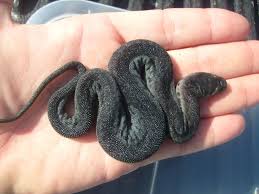
The effectiveness of the Javan file snake’s cutaneous respiration depends heavily on specific environmental conditions. Water temperature, oxygen content, pH levels, and pollution all directly impact the snake’s ability to breathe through its skin. The snake thrives in warm, well-oxygenated freshwater environments with temperatures typically between 24-30°C (75-86°F). Water with higher oxygen content allows for more efficient cutaneous respiration, while pollutants can severely impair this process by coating the skin or damaging its specialized respiratory tissues. This environmental sensitivity makes Javan file snakes particularly vulnerable to habitat degradation and water pollution. Conservation efforts must therefore focus not just on protecting the species directly but also on maintaining the water quality parameters that enable their unique breathing mechanism to function properly.
Evolutionary Origins of This Unique Adaptation
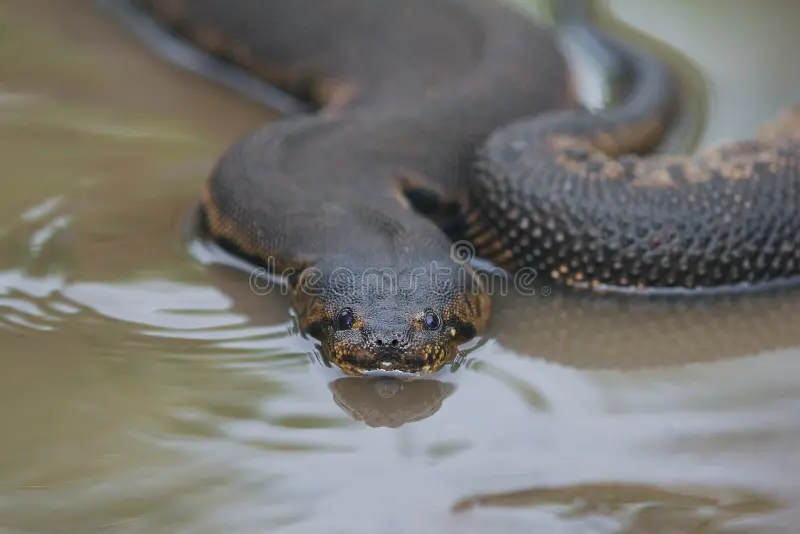
The evolution of cutaneous respiration in the Javan file snake represents a fascinating case of convergent evolution, where similar traits develop independently in unrelated species. Scientists believe this adaptation evolved gradually as ancestral file snakes spent increasing amounts of time in water pursuing aquatic prey. The earliest stages likely involved minimal skin breathing supplementing regular lung respiration, with natural selection favoring individuals whose skin allowed greater oxygen absorption. Over millions of years, this selective pressure resulted in the specialized baggy, porous skin seen today. Interestingly, the file snake’s evolutionary path parallels that of certain amphibians, despite reptiles generally evolving away from skin breathing. This evolutionary reversal highlights how environmental pressures can sometimes drive species to redevelop traits their ancestors had abandoned, creating specialized adaptations that open new ecological niches.
Conservation Status and Threats
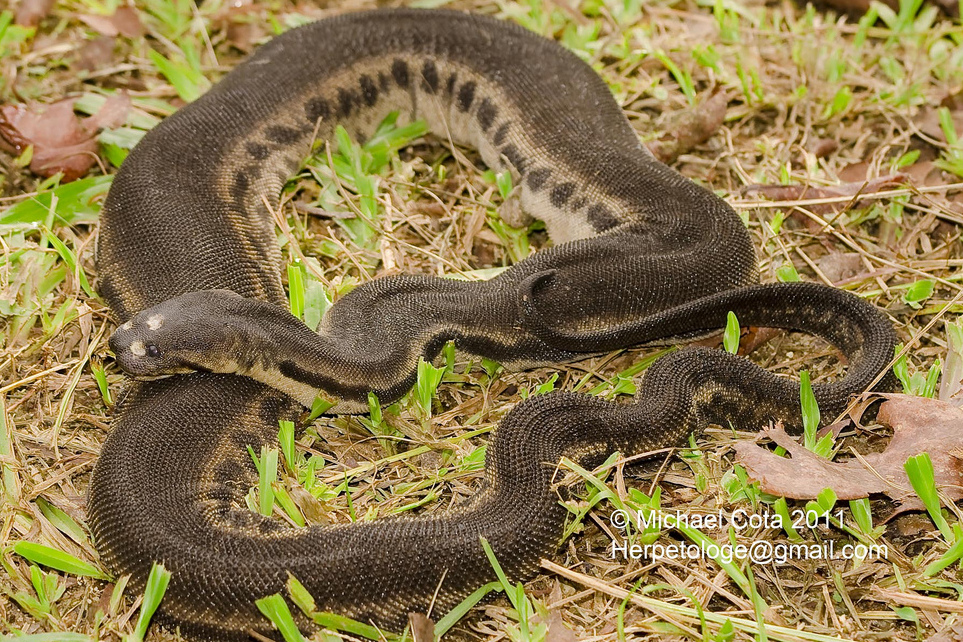
Despite its remarkable adaptations, the Javan file snake faces significant conservation challenges in the modern world. While currently listed as Least Concern on the IUCN Red List, populations are declining due to multiple threats. Water pollution represents perhaps the most serious danger, as industrial chemicals, agricultural runoff, and urban waste can directly interfere with the snake’s cutaneous respiration. Habitat destruction through dam construction, wetland drainage, and development along waterways has significantly reduced available habitat. Additionally, the species faces pressure from harvesting for the exotic pet trade and for its skin, which is used in some leather products. The snake’s specialized adaptations, which evolved over millions of years for specific aquatic environments, now make it particularly vulnerable to rapid environmental changes caused by human activities.
Research Challenges and Scientific Significance
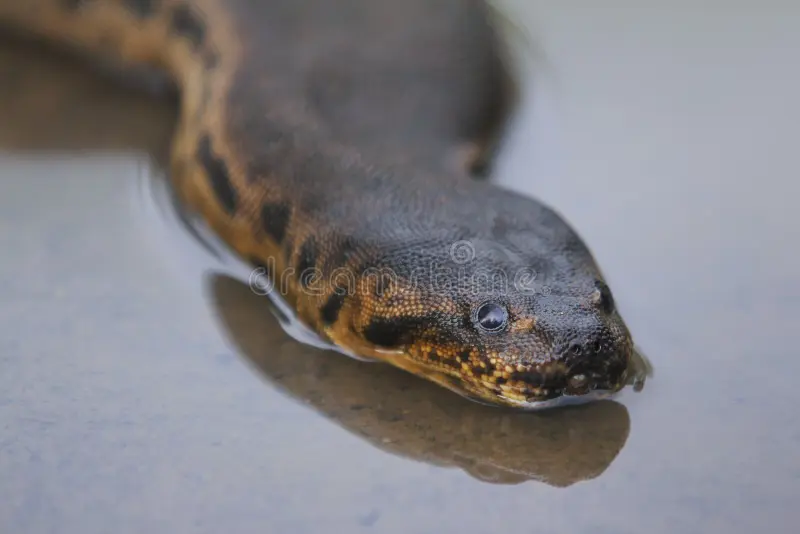
Studying the Javan file snake presents unique challenges for researchers, contributing to gaps in our understanding of this remarkable species. Their fully aquatic lifestyle makes field observation difficult, while their specialized respiratory requirements complicate captive research. Scientists must create precisely controlled aquatic environments to maintain healthy specimens for study. Despite these challenges, research on the file snake’s cutaneous respiration holds significant scientific value. Understanding the physiological mechanisms behind this adaptation could potentially inform medical applications involving gas exchange through membranes. Additionally, the snake serves as an important bioindicator species, with its presence and health reflecting broader ecosystem conditions in Southeast Asian freshwater habitats. Ongoing research efforts focus on quantifying exactly how much oxygen the snakes absorb through skin versus lungs under various conditions.
Similar Adaptations in Other Species
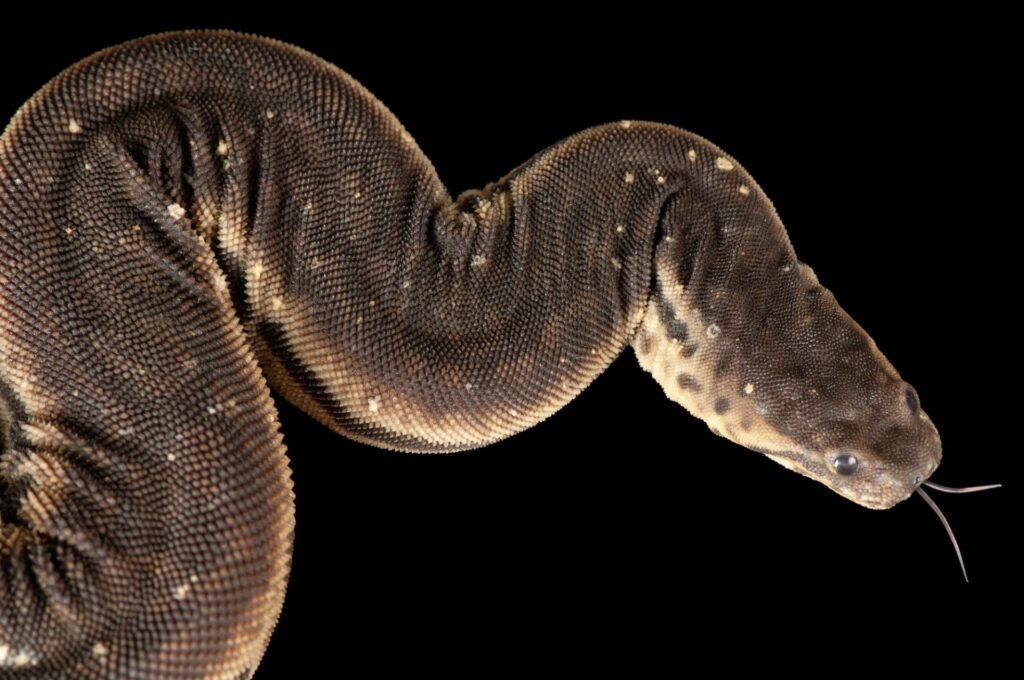
While the Javan file snake’s cutaneous respiration is unique among snakes, similar adaptations exist elsewhere in the animal kingdom, providing fascinating examples of convergent evolution. Amphibians like frogs and salamanders extensively utilize skin breathing, with some salamander species entirely lacking lungs and relying completely on cutaneous respiration. Certain turtle species, including the Fitzroy River turtle of Australia, can absorb oxygen through specialized chambers in their cloaca, an adaptation parallel to the file snake’s skin breathing. Marine mammals like dolphins have evolved highly efficient oxygen storage and utilization mechanisms, though through different physiological pathways. Among fish, certain species have developed modified swim bladders that function similarly to lungs. These diverse respiratory adaptations across the animal kingdom highlight the creative solutions evolution has produced for extracting oxygen in different environments, with the file snake representing one of the most specialized examples.
Significance in Indigenous Cultures and Folklore
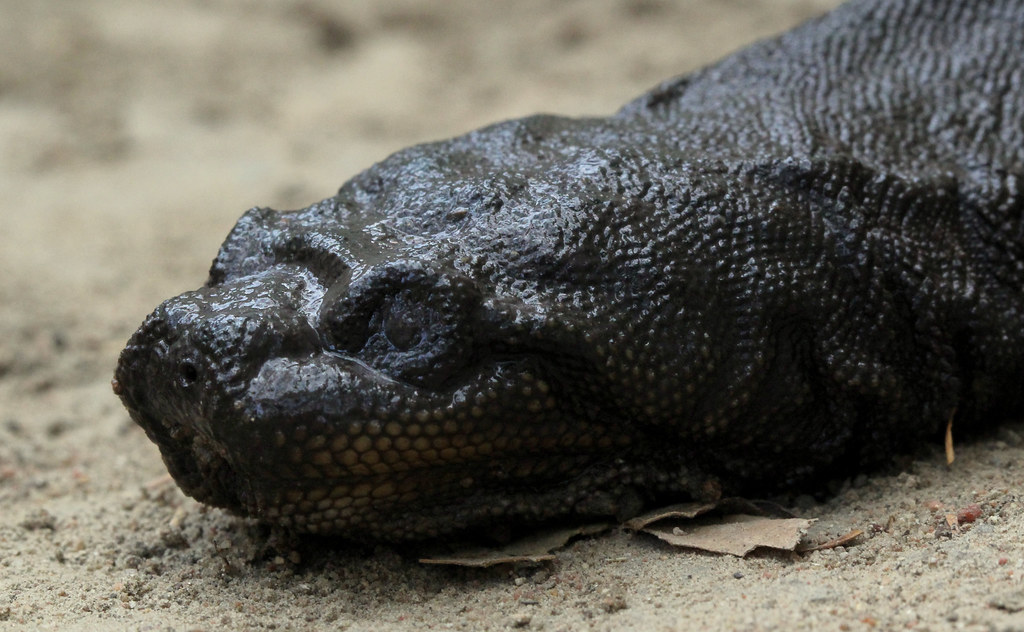
The Javan file snake holds cultural significance in various indigenous communities throughout its Southeast Asian range. In parts of Indonesia and Malaysia, local folklore often portrays the snake as a creature with supernatural abilities due to its mysterious underwater lifestyle and unusual appearance. Some traditional beliefs suggest the snake possesses healing properties, particularly for respiratory ailments – an interesting parallel to its actual respiratory adaptations. In certain communities, the snake’s presence in local waterways is considered a positive omen indicating healthy water systems. However, these cultural connections have complicated implications for conservation efforts. While traditional knowledge often includes sustainable harvesting practices, commercialization of these traditions can lead to overharvesting. Conservation programs increasingly work to integrate indigenous knowledge and cultural perspectives with scientific approaches to protect this unique species.
The Future of This Remarkable Species
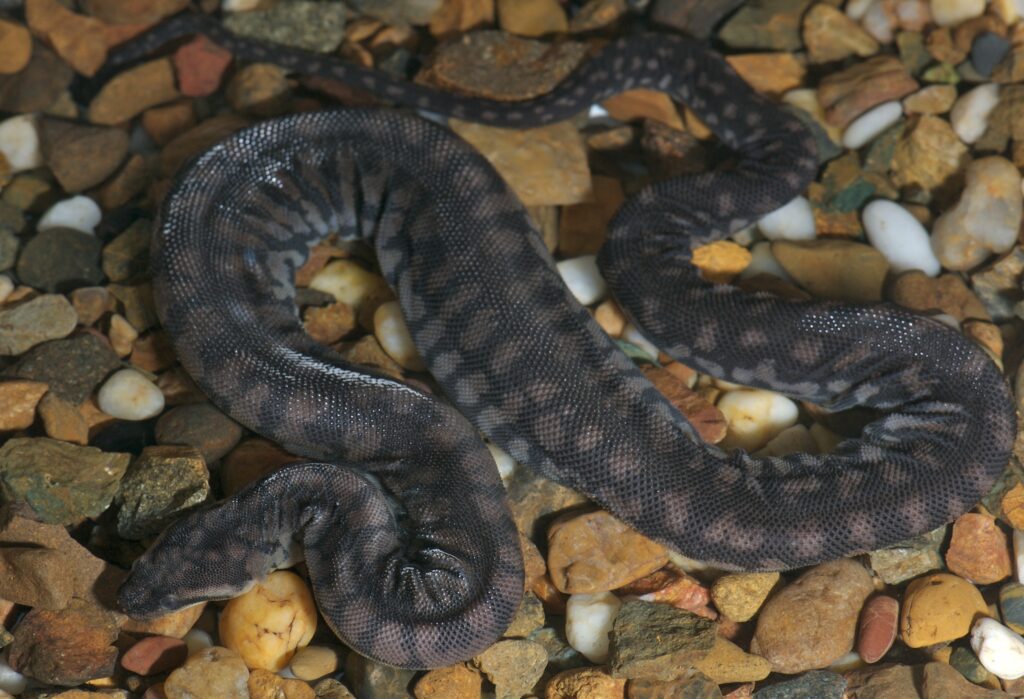
The future of the Javan file snake hangs in a delicate balance, with its survival depending on successful conservation strategies addressing its unique needs. Protected area designation in key habitats provides one crucial approach, particularly when these protections extend to water quality standards. Community-based conservation programs that engage local populations who live alongside these snakes have shown promise, especially when they include sustainable economic alternatives to harvesting. Scientific research continues to play a vital role by improving our understanding of the snake’s specific habitat requirements and population dynamics. Climate change poses an emerging threat, as alterations in temperature and precipitation patterns may affect the oxygen content and chemistry of the waterways these specialized reptiles inhabit. The story of the Javan file snake represents a compelling reminder of both nature’s remarkable adaptability and the fragility of specialized species in a rapidly changing world.
The Javan file snake stands as a remarkable testament to the incredible diversity of adaptations that have evolved on our planet. Its unique ability to breathe through its skin while underwater represents one of the most specialized respiratory systems among reptiles, allowing it to occupy an ecological niche that would otherwise be unavailable. This extraordinary adaptation, along with its many other aquatic specializations, makes it a fascinating subject for scientific study and conservation efforts. As we continue to discover and understand the remarkable adaptations of species like the Javan file snake, we gain not only valuable scientific knowledge but also a deeper appreciation for the countless ways life has evolved to thrive in every corner of our planet. Protecting this one-of-a-kind species and its freshwater habitats ensures that future generations can continue to marvel at nature’s remarkable capacity for innovation.

